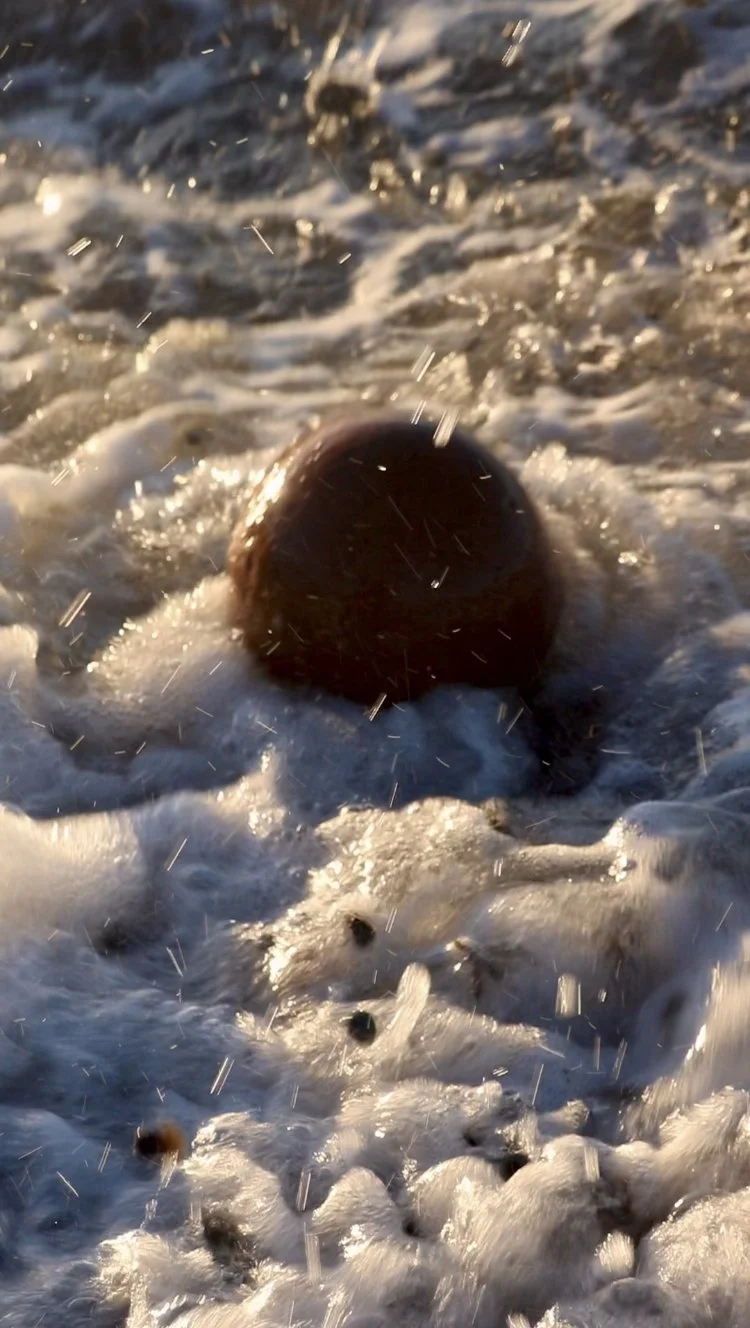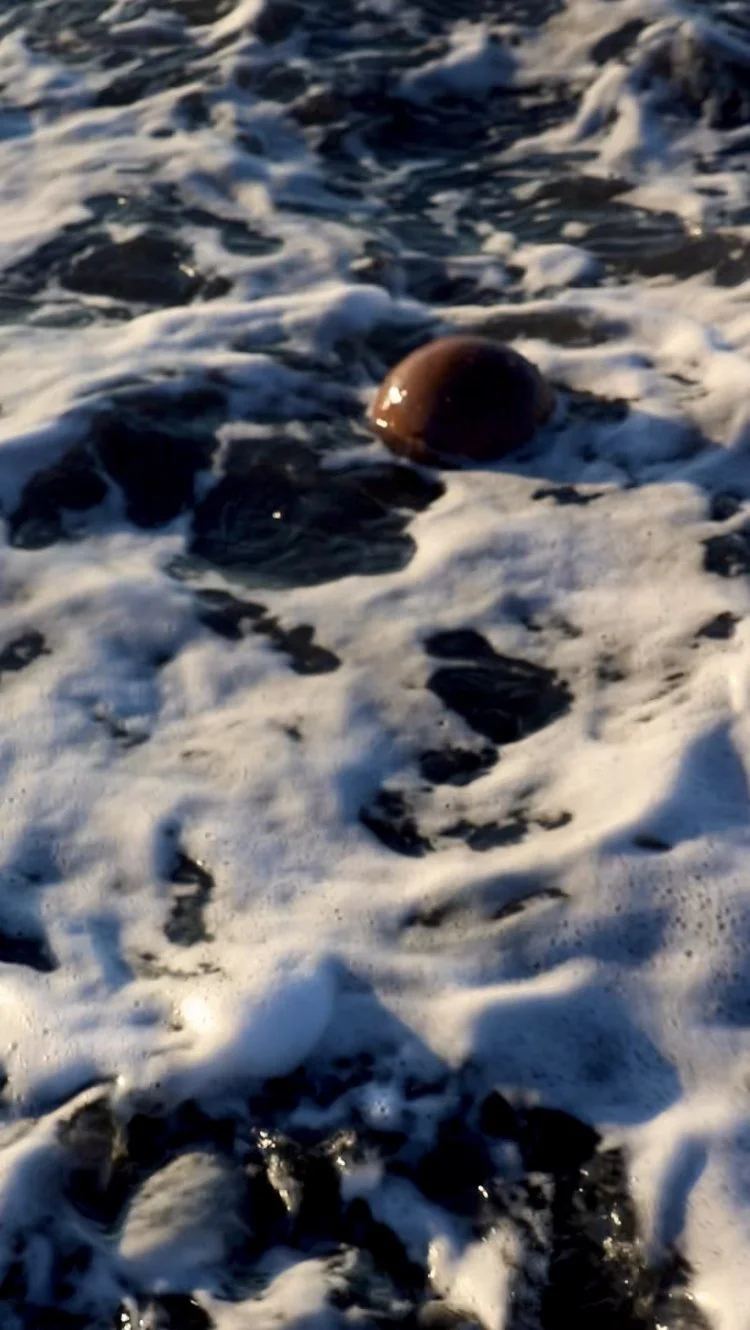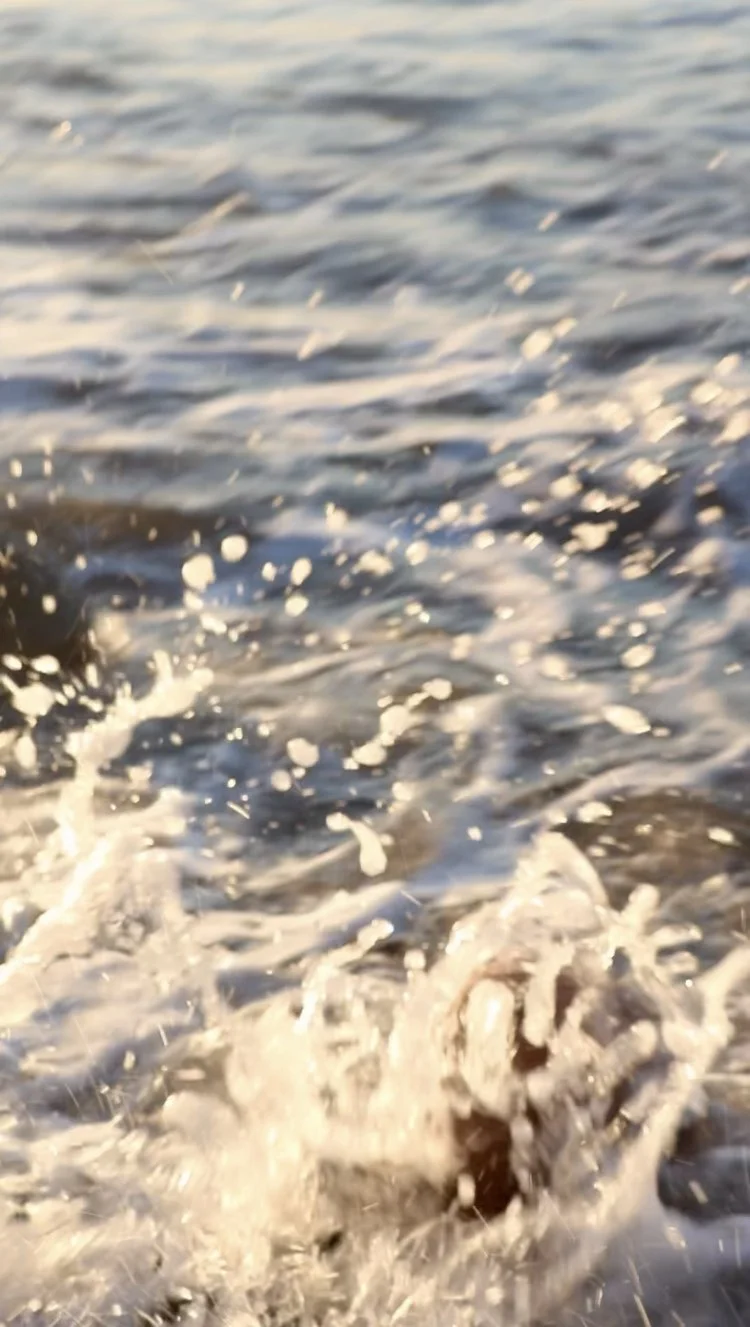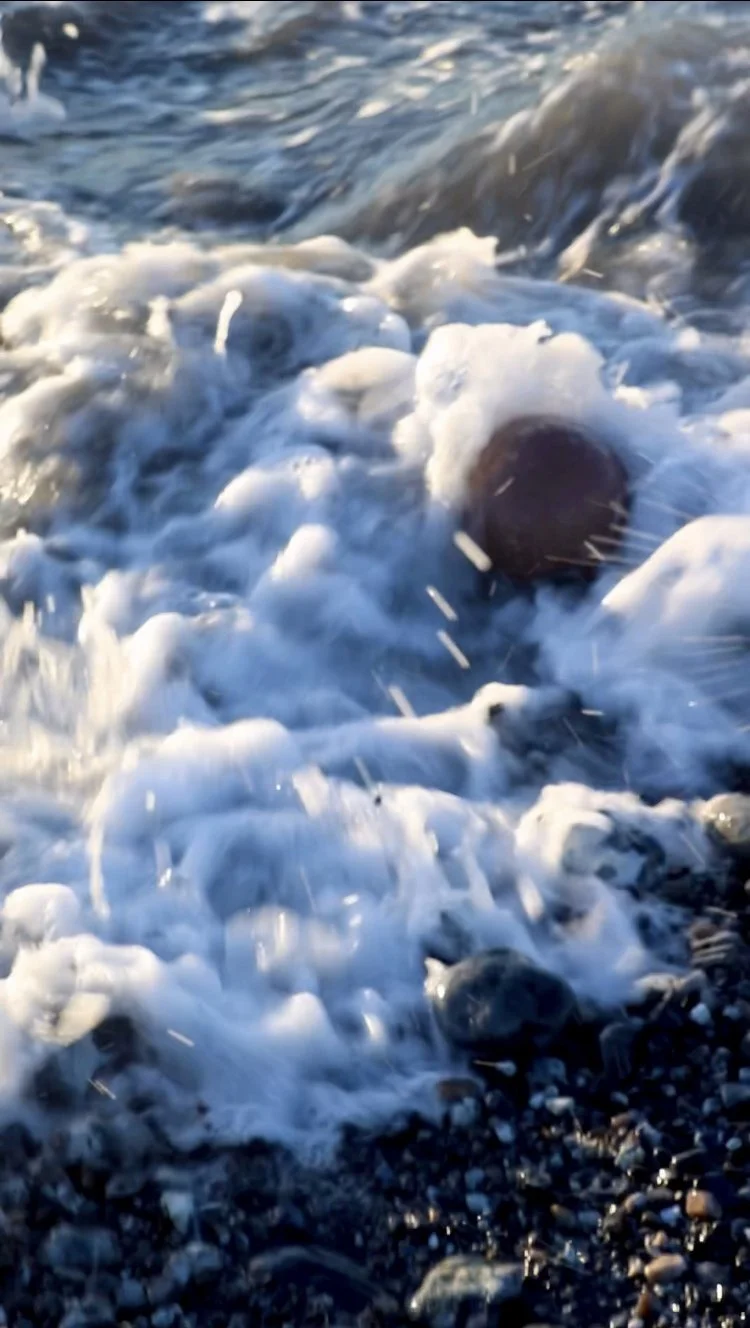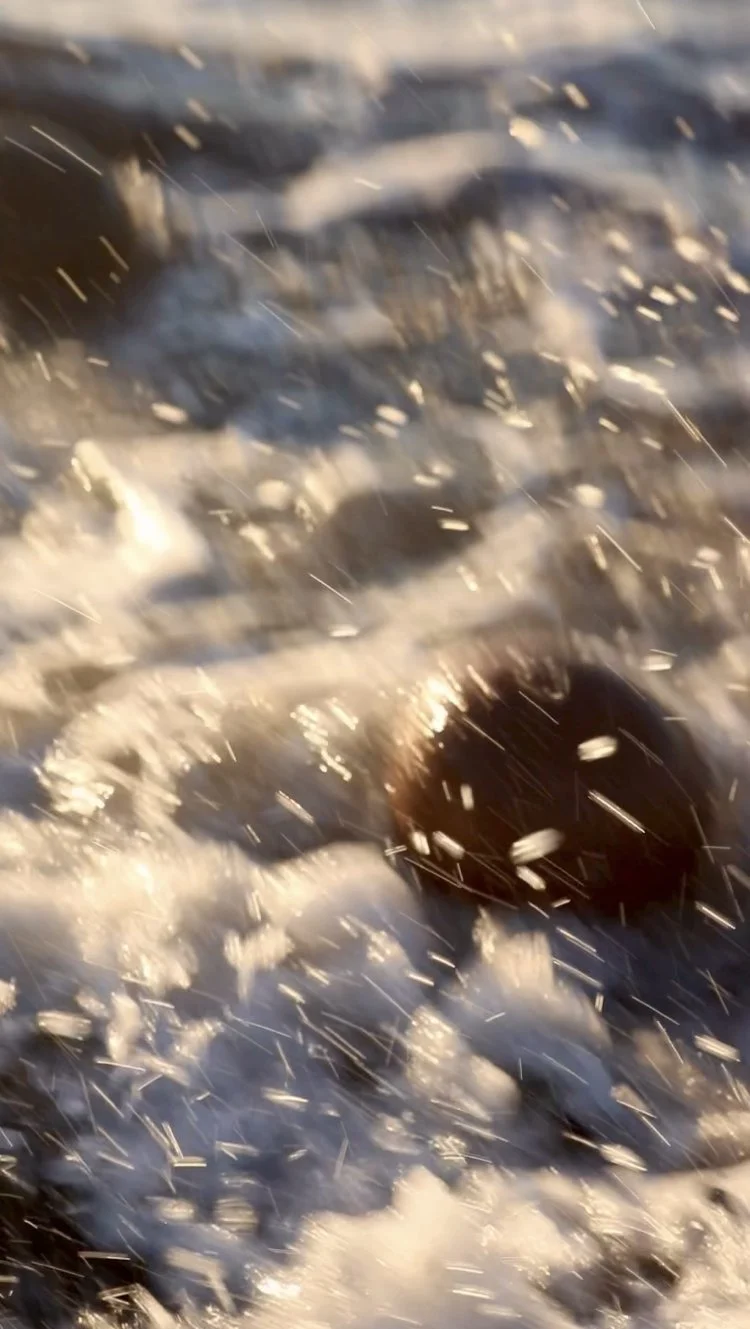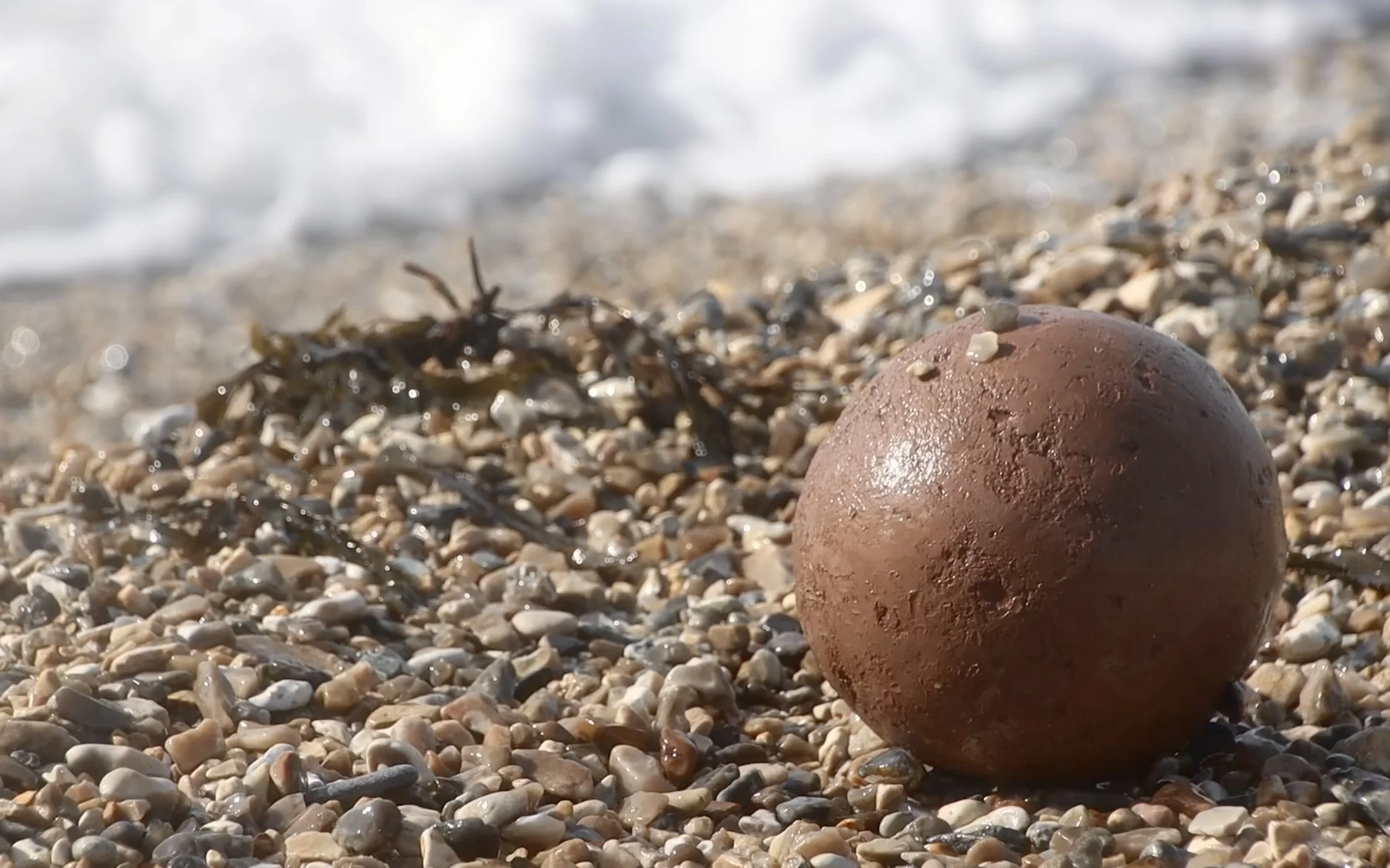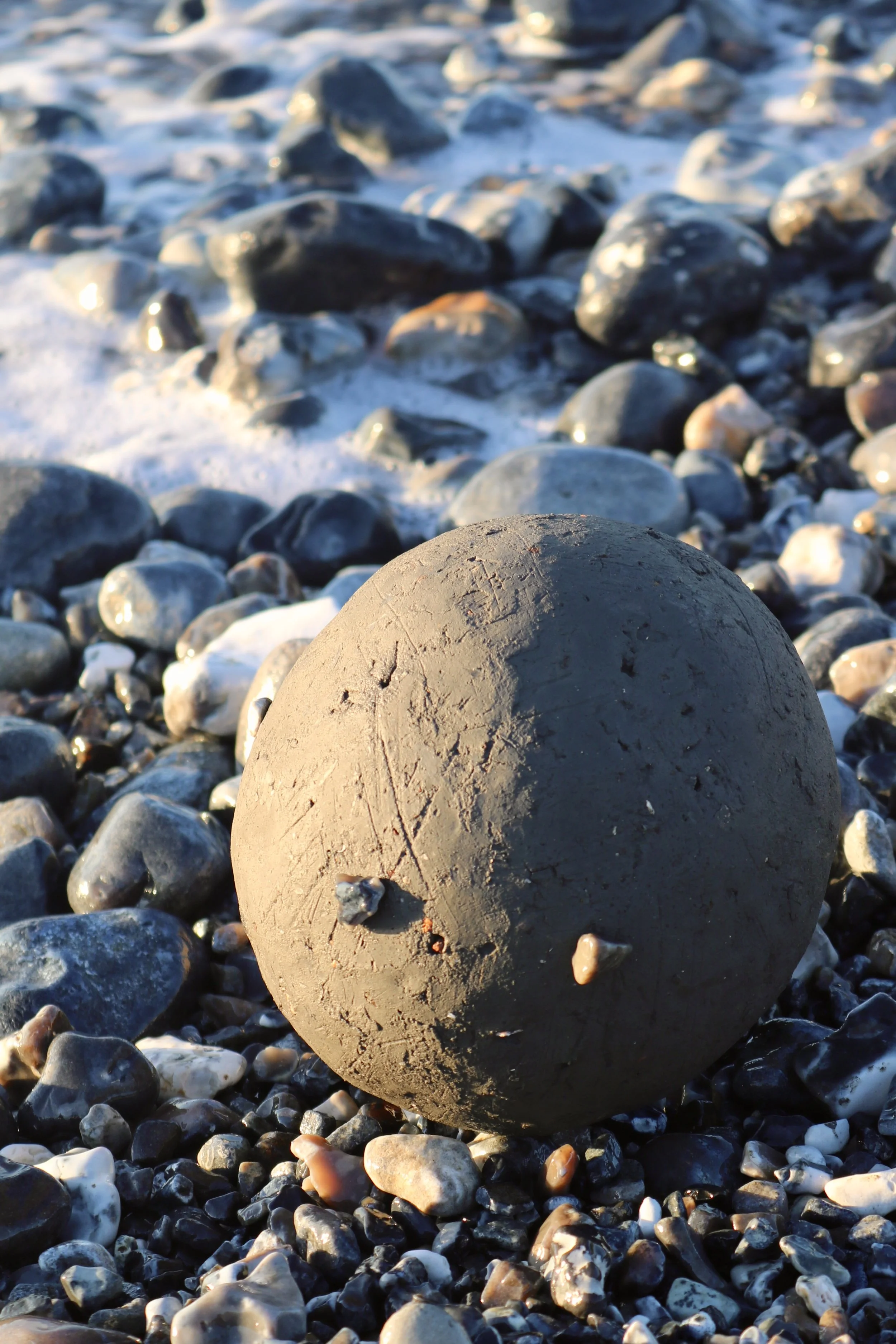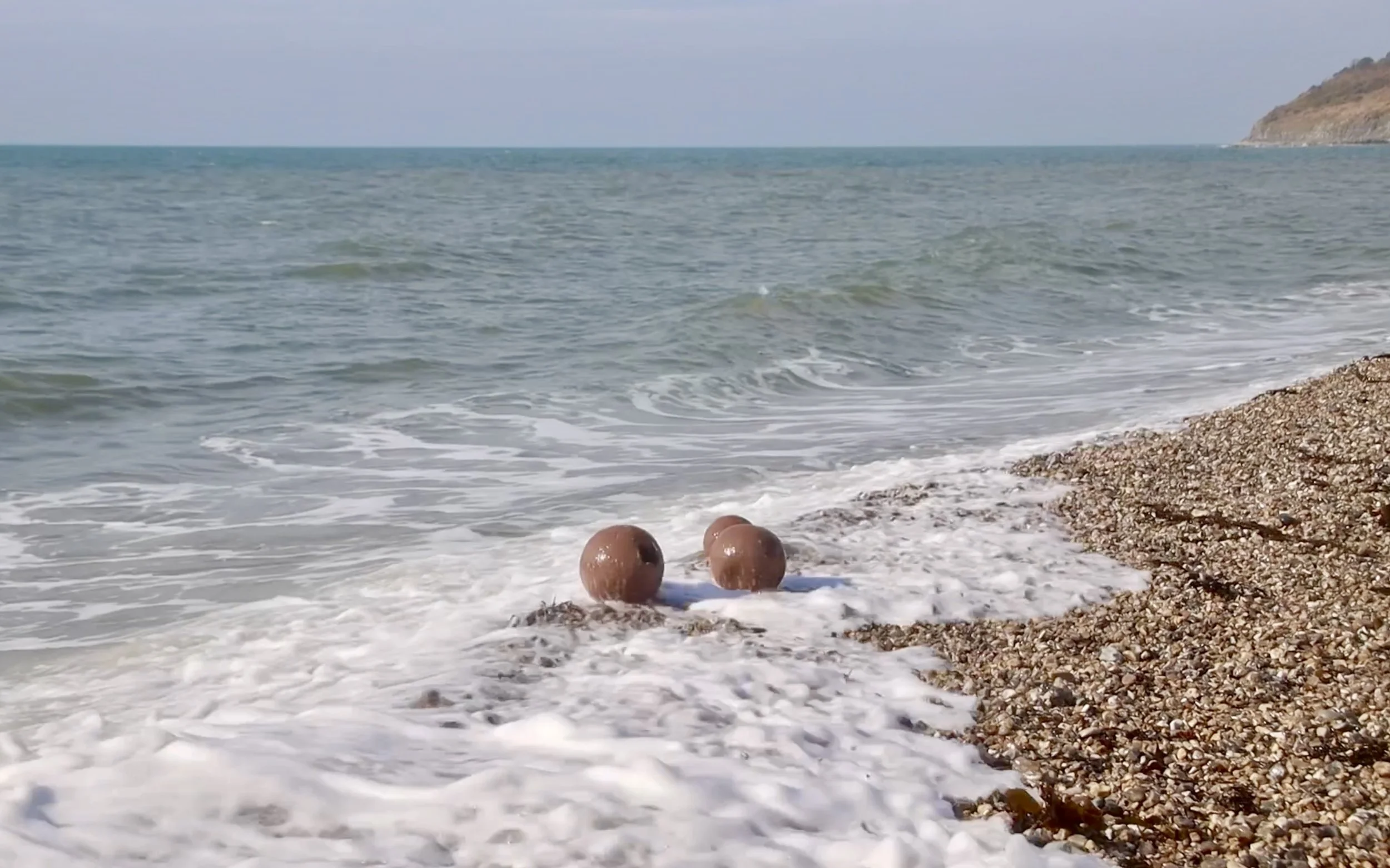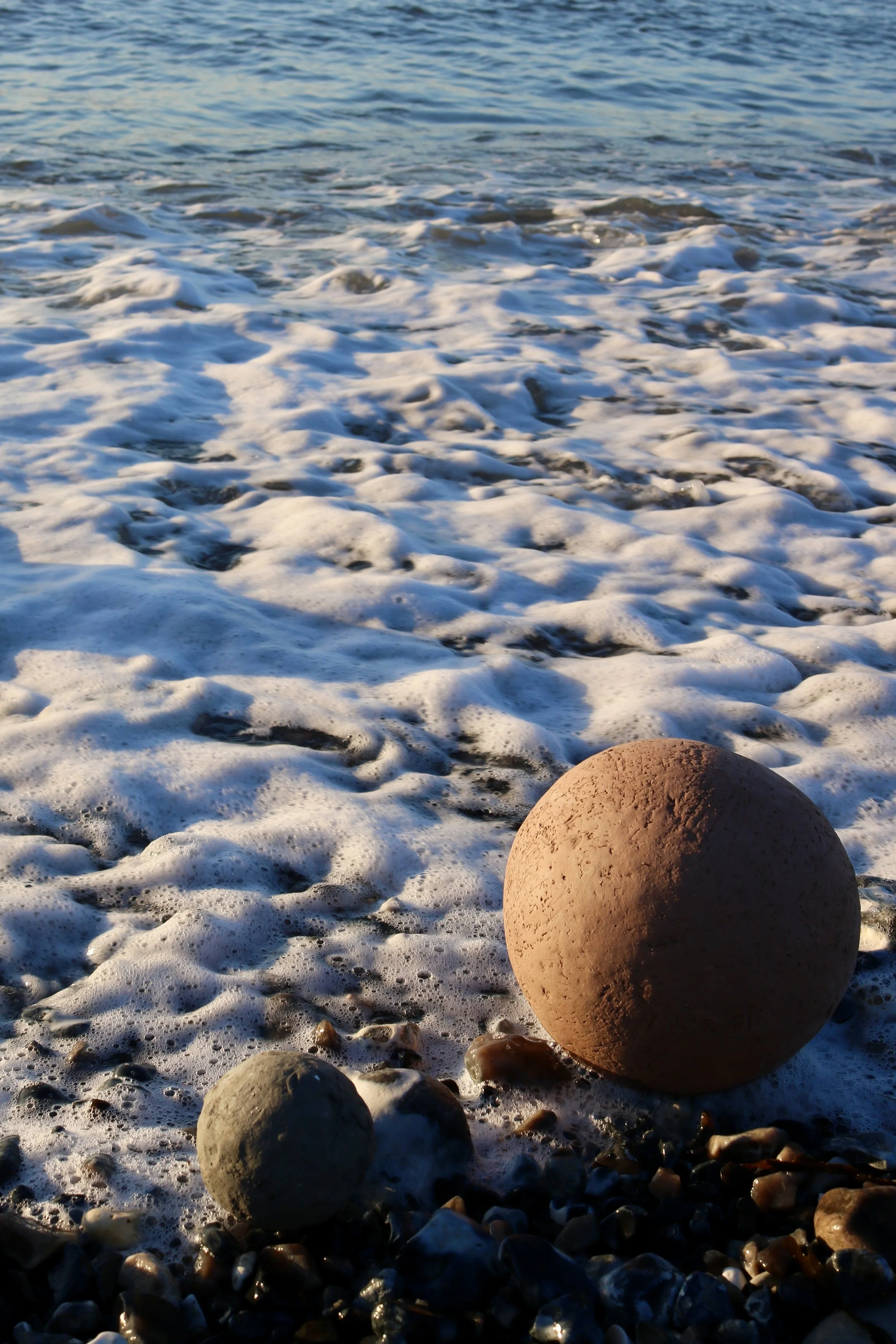SALT AND CLAY
Salt and Clay was part of my MFA research project at Bath Spa University (2022), developed through a site-responsive practice on the Dorset coast. The project explored the symbiotic relationship between clay and water, drawing on geological, ecological, and emotional narratives. It considered how clay holds memory - of land, body, and sea - and how water, in its constant motion, reshapes and reclaims. Through this project, I examined how the impermanence of material mirrors the fragility and resilience of our environments, bodies, and collective memory.
At the heart of Salt and Clay was an exploration into the parallels between the physical properties of clay, its permeability, plasticity, and sensitivity to water, and our own bodily and emotional states. Clay changes volume with moisture; it absorbs, expands, contracts, and cracks. Similarly, the human body is shaped by water: we gestate in it, are sustained by it, and continually exist within it. These parallels formed the basis of a deeply personal and ecological investigation into connection, care, and transformation.
Working with locally sourced Blue Lias clay, I made the beach my studio. The coastal landscape was not just a backdrop but an active participant in the making. My process was tactile, intuitive, and collaborative, shaped by the tides, weather, and terrain. I created forms directly on the shoreline, knowing they would be changed, eroded, or carried away by the sea. This act of surrender became central to the work. It was a conscious letting go of permanence and control, embracing instead a rhythm of impermanence and return, building a reciprocal relationship between myself and the landscape.
A material-led exploration of erosion, memory, and place.
This process of making and unmaking raised important questions about documentation and visibility. Much of the work was lost to the sea, recorded only in fleeting photographs or film stills. I questioned whether it was necessary for the work to remain at all. Could the experience of making, and the emotional knowledge it carried, be enough? Could writing, walking, and memory serve as alternative modes of holding the work?
Walking played a key role in the project. Moving along the intertidal zone became a way of mapping, both physically and emotionally. It allowed me to track not only the shifting landscape but my own fluctuating relationship to it. As a Neurodivergent artist, the act of walking was both a limitation and a method. It shaped the pace and nature of the work, grounding it in a lived experience of adaptation and sensitivity to environment.
The project also reflected on the broader parallels between man made and natural erosion, between human demolition and coastal collapse. Both landscapes bear the marks of water’s passage. Salt and Clay asked what it means to hold space in these shifting environments and how we might build a reciprocal relationship with the land. Through this project, I sought to engage with the landscape not as a resource, but as a collaborator, an entity with memory, agency, and knowledge.
Ultimately, Salt and Clay became a quiet act of connection and care. It was a meditation on impermanence, memory, reciprocality and the potential of materials to speak to both individual and collective experiences of place, loss, and transformation.
Salt and Clay (I), 2022
Shot on a low-resolution camera, this film captures the moment clay forms are returned to the sea, blurring the boundary between material and tide, presence and disappearance.
Medium: Moving image
Duration: 2:54
Location: Dorset coast
Salt and Clay (II), 2022
This moving image work documents the impact of waves on unfired clay vessels, using the camera’s lo-fi aesthetic to echo the distortion and unpredictability of the coastal environment.
Medium: Moving image
Duration: 2:48
Location: Dorset coast
Salt and Clay Sculpture II
Clay sphere beginning to break down at the tide line.
Location: Dorset Coast
Material: Unfired native clay
Size: Sphere approx. 38 cm diameter
Salt and Clay Sculpture IV
Coiled clay bowl formed directly on site.
Location: Dorset Coast
Material: Unfired Blue Lias clay
Size: approx. 26 cm diameter
Salt and Clay Sculpture III
Clay sphere with embedded beach fragments.
Location: Dorset Coast
Material: Unfired Blue Lias clay
Size: Approx. 25 cm diameter
Salt and Clay Sculpture I
Unfired clay spheres placed at the tide line.
Location: Dorset Coast
Material: Blue Lias clay
Size: Approx. 45 - 52 cm diameter each
Salt and Clay Sculpture II
Two unfired clay forms positioned within the surf.
Location: Dorset Coast
Material: Unfired clay
Size: Approx. 12–38 cm diameter
Salt and Clay Sculpture I
Three hand-formed vessels placed on shingle beach.
Location: Dorset Coast
Material: Unfired clay
Size: Approx. 45 - 52 cm diameter each
